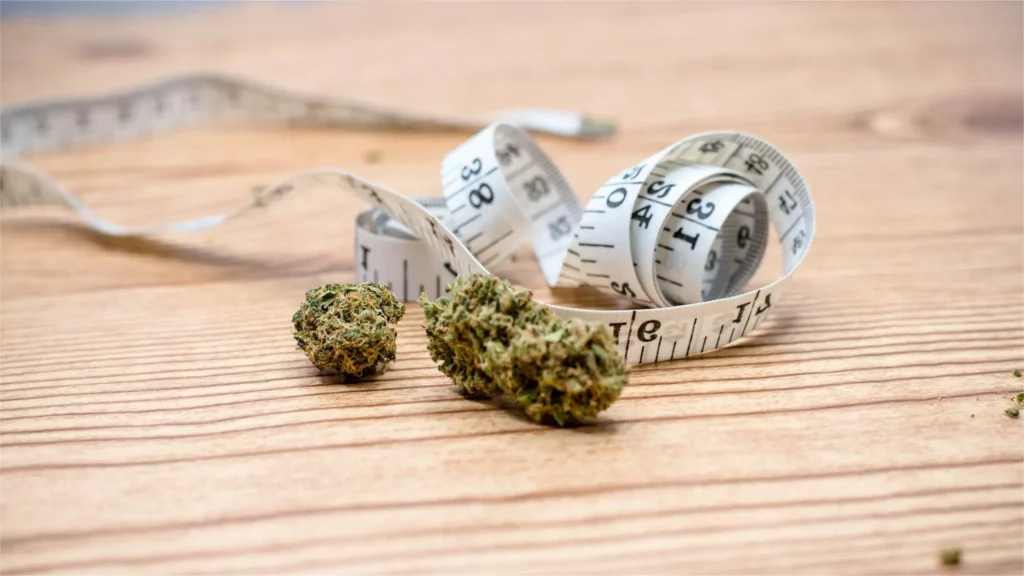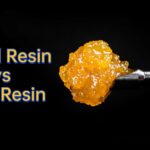Does weed have calories or not? The relationship between weed and calories often surprises cannabis consumers. Many assume that smoking or eating marijuana products automatically leads to weight gain. However, emerging research reveals that cannabis users tend to have lower BMIs than non-users.
So what gives? Let’s analyze the different consumption methods to uncover the truth.

Contents
What Are Cannabis Plant Calories?
The cannabis plant itself contains very few calories by weight. Estimates show raw marijuana contains around 2 calories per gram. So a 100 gram nug would have about 200 calories. Of course, most people don’t eat raw cannabis flower. Instead, they typically smoke, vape or ingest infused edibles.
Smoking and Vaping Weed Calories
Believe it or not, inhaling weed smoke does technically add about 1 calorie to your diet. But the bigger issue is that THC triggers hunger hormones leading many users to snack after smoking.
Why Does Weed Give You the Munchies?
When you smoke or vape weed, THC enters the bloodstream and travels to the brain. It then binds to CB1 receptors that stimulate appetite and trigger the release of the hormone ghrelin.
Ghrelin signals the hypothalamus region of the brain telling the body it needs food. Along with increased dopamine and heightened senses of smell and taste, no wonder many cannabis users get the munchies!
Explaining the Weed-Weight Loss Link
Compounds in weed called cannabinoids regulate appetite through the endocannabinoid system. The two main ones are:
- Tetrahydrocannabinol (THC): Responsible for the marijuana “high”
- Cannabidiol (CBD): Non-psychoactive but therapeutic
Theory 1: THC Causes Appetite Suppression
Though THC initially stimulates hunger, a rat study found that consistent, heavy THC exposure desensitized CB1 receptors involved in hunger signaling over time. This could hypothetically suppress appetite with prolonged use.
Theory 2: CBD & THCV Blunt Appetite
In contrast to THC, CBD may directly block CB1/CB2 receptor activity that drives food intake and weight gain. Another compound called THCV behaves similarly, opposing these receptors.
So in different ways, key cannabinoids may counteract the munchies and appetite promotion associated with weed.
Weed Smoke vs. Vape for Calorie Avoidance
For smokers trying to watch their calorie intake, vaping weed offers a couple advantages:
- No combustion byproducts – Vaping heats cannabis oil just enough to vaporize THC, CBD and terpenes. Smoking burns plant material creating smoke containing nominal calories plus carbon monoxide and tar.
- Temperature control – Vapes allow precise temp adjustment to vaporize cannabinoids efficiently without overheating. This prevents benzene formation, a known carcinogen.
- Portion control – Prefilled vape cartridges provide measured doses. This helps moderate THC intake compared to continuously smoking.
So while smoking and vaping both add about 1 calorie to your tally, vaping offers better effects control and avoids unhealthy combustion byproducts.
Edibles – Where Weed Calories Add Up
In contrast to inhaling THC vapor, consuming edibles directly introduces sometimes significant calories. Of course, this depends entirely on the specific recipe and serving size.
Take a look at the calorie counts for some popular edible types:
| Edible Type | Serving Size | Avg. Calories |
|---|---|---|
| Brownie | 1 brownie (50g) | 220 |
| Cookie | 1 average cookie | 180 |
| Gummy | 1 gummy | 20 |
| Beverage | 12 oz can | 220 |
As you can see, calorie counts range widely from around 20 calories per gummy to over 200 calories for a brownie or infused drink.
Tips For Low-Calorie Edibles
If limiting calories is your goal, here are some tips for choosing low-cal edibles:
- Check labels – Read nutrition facts panels and look at calories per serving. Compare between brands.
- Pick gummies – Gummies average just 20 calories each. Opt for naturally sweetened pectin or fruit juice-based.
- Go sugar-free – Many brands now offer THC gummies and chocolates sweetened with stevia and monk fruit instead of sugar.
- Make DIY edibles – Create your own low-cal candy, granola and smoothies using fresh ingredients like fruit.
While delicious, weed edibles easily add excess calories if you aren’t careful. Moderation remains key for both desired effects and avoiding weight gain.
Workout Before Getting High
Here’s an idea if you plan on partaking in higher calorie edibles – get your workout in before getting high instead of after. This takes advantage of cannabis’ ability to make workouts more enjoyable for some people.
Burning calories first offsets indulging later when the munchies strike. Just remember to stay hydrated and listen carefully to your body to avoid potential overexertion or injury.
The Bottom Line
So does weed have calories? The short answer is it can, but doesn’t necessarily have to. Traditional smoking or vaping adds only about 1 calorie to your intake which is negligible. However, edibles can pack on plenty extra calories depending on their ingredients.
Despite marijuana’s hunger-inducing effects, research finds that most regular cannabis consumers maintain lower than average body weight. Likely reasons include a boost in metabolism from THC along with the potential for CB1 receptor downregulation over time muting the munchies effect.
As with most things, moderation and balance remains key. Monitor your cannabis intake and select low calorie options when possible. And be sure to keep up healthy lifestyle habits like proper nutrition and regular exercise.
With a little planning, weed and weight loss goals aren’t mutually exclusive!
FAQS
Are there carbs in weed?
Like most plants, raw cannabis contains carbohydrates. However, when weed is smoked, vaped or used to produce extracts like oils and concentrates, the carbs are eliminated in processing. So inhaled or extracted forms of weed do not contain carbohydrates.
Edibles are a different story. Weed edibles like baked goods, chocolate and candies can contain significant carbohydrates depending on the other ingredients used. For example, a marijuana brownie contains carbs from sugar and flour in the recipe. When checking labels, make sure to review nutrition facts for carb counts.
Does smoking weed cause acne?
There is no definitive evidence showing a direct link between smoking marijuana and developing acne. However, cannabis use does carry risks for other skin issues like dryness, irritation and redness if smoke repeatedly comes into contact with facial skin over time.
Many additional factors beyond weed smoking can also contribute to acne like genetics, hormonal changes, hygiene and diet. So while smoking itself may not be a proven acne culprit, those worried should take preventative skincare steps like frequently washing their face.
How many calories in a cigarette?
On average, smoking a single cigarette contains roughly 10-15 calories depending on brand, size and tobacco to filter ratio. So smoking a pack per day adds up to 200-300 calories. However this does not account for increased appetite and cravings that smoking can induce which drives additional caloric consumption.
Over months and years, excess smoking calories compound leading to unwanted weight gain in some people if not balanced with exercise. This contrasts with marijuana which, despite giving some users the munchies initially, research shows does not lead to long term weight gain and may slightly elevate metabolism.






